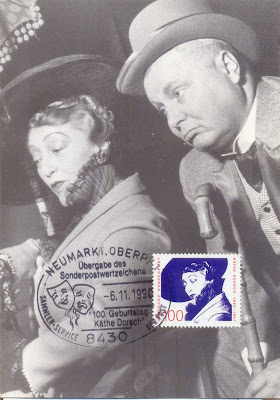Käthe (Katharina) Dorsch (29 December 1890 - 25
December 1957) was a German actress. She was born in the Bavarian town of Neumarkt in der Oberpfalz, the daughter of a bakery
helper. Her family moved to Nuremberg, when she was three years
old. Dorsch attended a commercial school and had her first engagement aged 15
as a choir singer at the Staatstheater, performing Wagner's Die Meistersinger von Nürnberg. She appeared in Carl Zuckmayer's 1927 play Schinderhannes.
Dorsch is buried at the cemetery of Bad Saarow-Pieskow. A memorial stands at Waldfriedhof Dahlem in Berlin.
Thank you Maria.













